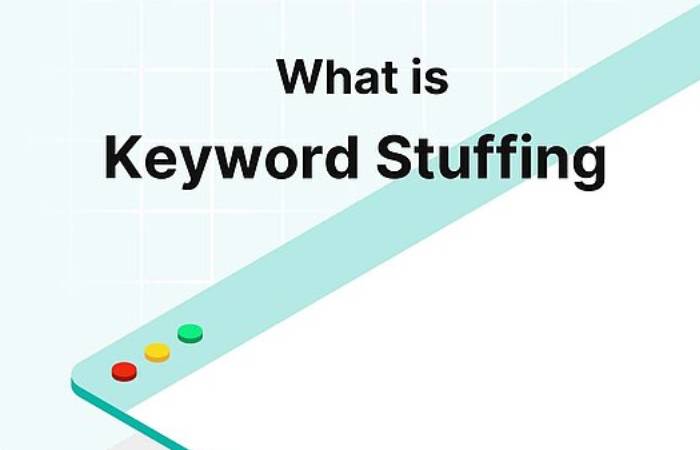Table of Contents
Keyword Stuffing
Keyword stuffing, known in English as “Keyword Stuffing”, is an unethical search engine optimization strategy.
A web page is overloaded with as many keywords as possible to increase its search engine ranking.
What is keyword stuffing?

- While [keyword stuffing] was undoubtedly a helpful technique in the early days of SEO, it almost certainly resulted in a penalty from Google.
- It is not considering an effective method of improving search engine ranking.
- This technique became popular in the 1990s and early 2000s when Google and other search engines based search results on exact keyword matches.
- This [keyword stuffing] technique included:
Blocks of pages are practically made up of different lists of search terms. - We incessantly repeat keywords in a text several times, no matter how unnatural and difficult to assimilate.
- Hidden keywords, matching the font color to the background design of the web page.
Is that considered keyword stuffing in terms of SEO?
- Keyword stuffing is when you intentionally and unnaturally place keywords in your content to manipulate search engine rankings.
- If “hp toner” appears naturally on your pages, that’s fine. However, if you’re putting it in all the places you can, including the areas it doesn’t belong, then that’s [keyword stuffing].
- On the other hand, [keyword stuffing] is a waste of time nowadays because search engines have jotting good at detecting it.
- And devalued keyword density to the point where it no longer makes a significant difference.
What are the dangers of using keyword stuffing?
- As we have already mentioned, using this technique can result in a penalty from Google. For e-commerce or another website.
- A decrease in search ranking means potential customers have less chance of finding that page.
- Here are other details of why you should avoid [keyword stuffing], including an increased bounce rate for business websites.
- As well as a loss of trust and engagement from customers and users. People don’t want to waste their time on a site that doesn’t offer quality or valuable content.
Keyword stuffing is a ranking factor
Alert match keywords were once a signal that approved a lot of weight. When a keyword appears on a page exactly as the user entered it, the page has a high chance of ranking.
When people discovered that they could rank their websites for more searches by repeating different variations of keywords on a page, the technique known as keyword stuffing emerged.
You could get left with a lot of keyword filling. It ranged from excessive keywords in the page body to entire paragraphs that were just keywords separated by commas.
A more egregious form of keyword stuffing was to hide keyword paragraphs by creating the text the same color as the page background. Google might see hidden keywords when crawling pages, but users wouldn’t notice anything inappropriate.
Stuffing keywords wasn’t limited to on-page copy. Page titles and meta descriptions were stuffed with keywords to manipulate their search rankings.
When people say that early SEO was like the Wild West, that’s what they mean. Not only were websites not penalized for keyword stuffing, but they also benefited from it.
And then the Google updates will start rolling out
The impression of keyword stuffing on search rankings changed in 2003 when Google released the Florida Update, believed to be the first significant update to Google’s algorithm.
There is evidence that the Florida update targeted link spam, but sites using other spamming techniques were also affected.
While Florida did reduce the ranking impact of keyword stuffing to some extent, it still wasn’t entirely unrewarded by Google’s algorithms.
In 2011, Google released the Panda update, which targeted low-quality, low-content sites and offered little to no added value.
It inevitably resulted in keyword-stuffed pages being demoted in search results as these pages tended to add less value to the web, likened to pages not written for gaming search engines.
Evidence of keyword stuffing as a ranking factor
There is evidence in all Google search results that keyword stuffing is not a ranking factor.
Today’s SERPs have sheet titles that read naturally, meta similes containing actual text paragraphs, and articles that aren’t cluttered with unnecessary exact-match phrases.
But that’s anecdotal evidence. Let’s look at the hard evidence straight from the source.
Google’s Webmaster Guidelines, which websites must follow to stay indexed in search, recognize [keyword stuffing] in a chapter called “Irrelevant Keywords”.
Also Read: Galaxy Active2 – Design, Widen Your Space, and More


